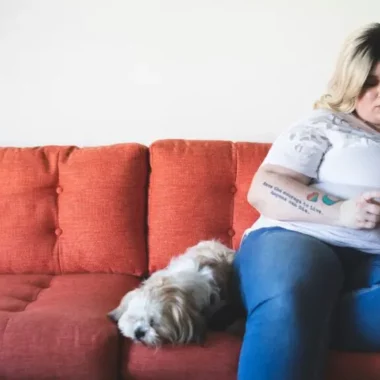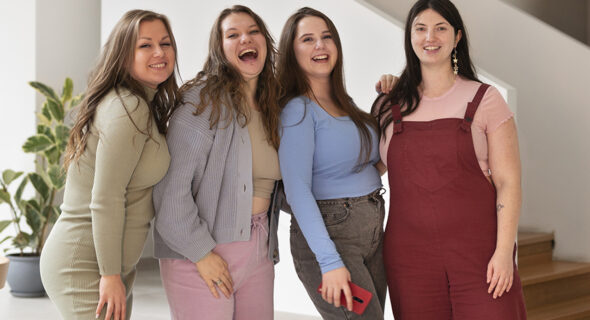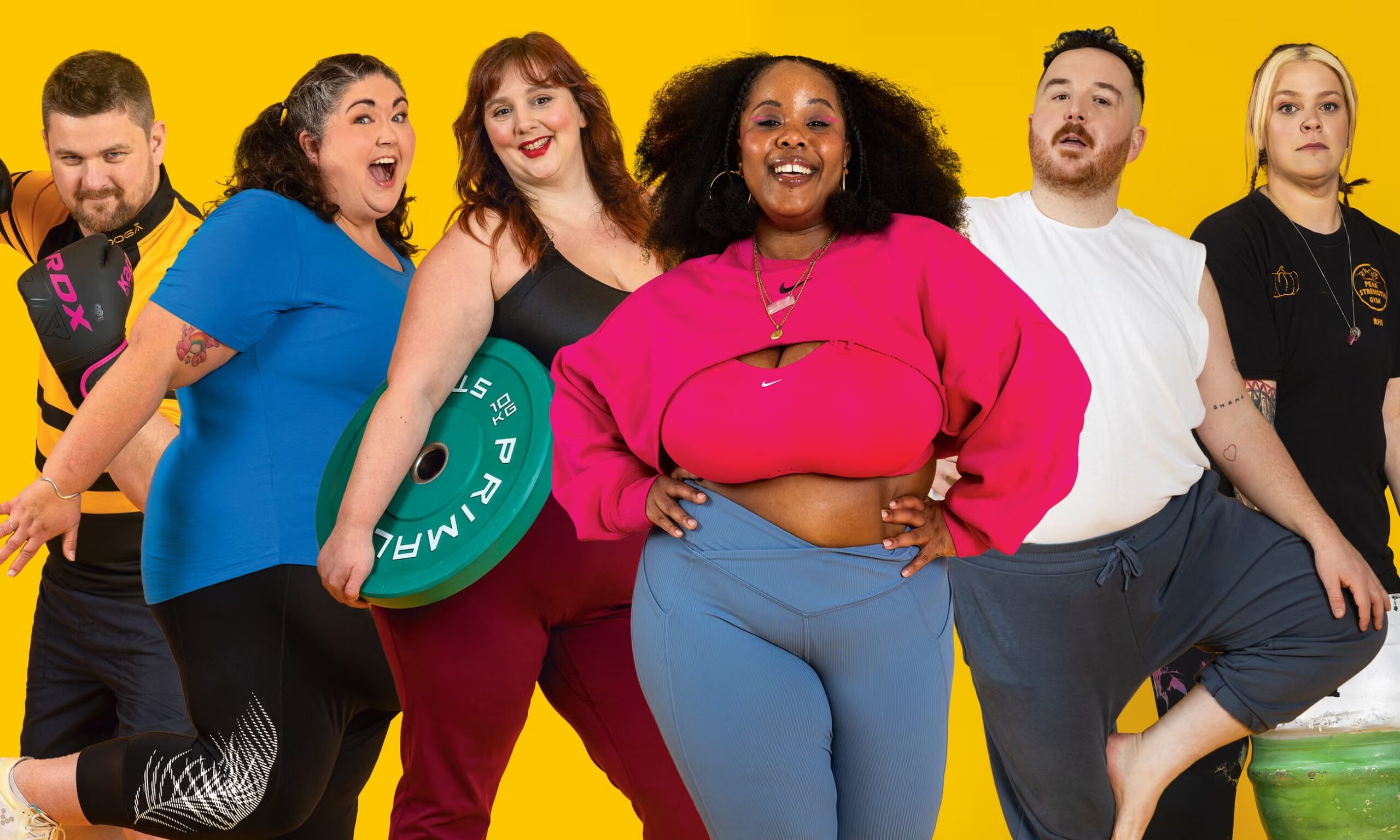
Fit and Fat? Yes, You Can Be Healthy at Any Size – Real Stories That Prove It
Why You Don’t Need to Be Skinny to Be Strong, Healthy, and Confident
In today’s wellness culture—dominated by quick fixes like Ozempic and extreme dieting—thinness is still seen as the gold standard of health. But the truth is, you don’t need a smaller body to be strong, agile, or healthy. More and more people are redefining fitness by proving that well-being isn’t about losing weight—it’s about gaining strength, confidence, and balance at any size.
On an autumn evening in Essex, a group of women gathers inside a local community centre while others join via Zoom. They are here for MissFits, an inclusive workout session led by fitness instructor Becky Scott. These classes are designed to help plus-size people feel empowered through movement — although people of all body types are welcome. “I know people in much smaller bodies who wouldn’t feel comfortable standing at the front and doing what I do,” says Becky. “But when I’m leading the class, I step into my role as Becky the fitness instructor.”
Her sessions are upbeat, accessible, and fun — combining simple aerobic moves with imaginary glitter-throwing and squats, all aimed at joy, not judgment. Becky, 43, loved dancing as a child — ballet, tap, jazz — but gave it up at 15. “Everyone was going en pointe, and I thought: I’m never going to have a career in dance. Why mess up my joints for a hobby?”
Years later, after becoming a mother, she returned to fitness — initially to lose weight and set a good example for her kids. But after two decades of yo-yo dieting and self-blame, she began questioning the narrative. “I thought I lacked willpower, but then I heard others saying the same thing. That’s when I started shifting my mindset.” She started attending Zumba and was soon exercising four to five times a week. While she felt better mentally and physically, her body shape didn’t change much — and she grew tired of patronizing comments like, “Good for you!” or “Keep going!”
In 2019, Becky launched her own classes in Colchester. “I trained and thought I’d give it a try for a few months. If it didn’t work, I’d go back to my old job.” But the classes quickly gained popularity. “I discovered I wasn’t alone in how I felt about moving my body,” she says. During the pandemic, her sessions moved online and attracted participants from all over — even as far as Texas and Melbourne. Today, MissFits is described as a space for ‘movement and exercise opportunities for people who don’t feel at home in the gym.
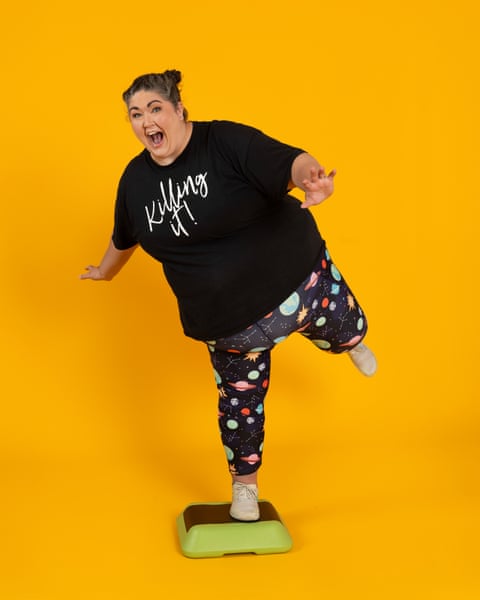
Becky Scott is content with her current fitness level and embraces the philosophy of Health at Every Size (HAES). “There’s been far too much focus on weight loss as the main reason to exercise,” she explains. “But the research just doesn’t support that. Only about 5% of people in larger bodies become smaller-bodied permanently.” Instead, Scott advocates for reframing the conversation around fitness to focus on mental health, mobility, social connection, and overall well-being, rather than the number on the scale. “Exercise can improve health outcomes at any size,” she adds. “It’s about getting outside, fighting isolation, and boosting your mental health—not shrinking your waist.”
Despite her good health, Scott has personally experienced the bias that comes with living in a larger body. She recalls visiting a doctor about a possible hernia, only to be told: ‘We can’t operate because of your weight. Would you consider a gastric bypass?’ “There were no health markers indicating I was unwell,” she says. “My blood pressure is normal, I have no joint pain, I’ve had two healthy pregnancies, and my cardiovascular fitness is fine.” But because her BMI classifies her as morbidly obese, her health was unfairly questioned. A 2024 report in The Lancet, backed by 75 medical organizations, echoed this issue—calling for a major shift away from BMI as a diagnostic tool and instead focusing on fat distribution and its actual impact on organs and function.
Scott recently completed a master’s degree in sport and exercise psychology at the University of Essex, where she also works full-time managing a business faculty team. Her dissertation focused on the lived experiences of fat exercisers and non-exercisers. One participant summed it up perfectly: “I notice a difference when I’m physically active. Even if I hate it during the session, afterward, I feel better and more accomplished.”
While drugs like Ozempic and Mounjaro have dominated headlines for promising rapid weight loss, a growing number of fitness professionals and everyday athletes are challenging the idea that shrinking your body is the only path to health. For Scott, movement isn’t about changing her size — it’s about living fully in the body she has. “My body will always be bigger, no matter how active I am,” she says. “But moving it still makes me feel strong, capable, and proud — and that’s worth everything.”
Is It Possible to Be “Fat but Fit”? New Research Suggests Yes—With Conditions
The debate over whether someone can be “fat but fit” continues, but new evidence from a 2024 study by the University of Michigan offers important insight. The research found that people who exercised moderately to vigorously at least four times per week for two years had healthier belly fat than those who were inactive—despite having similar body weight and fat mass. According to Dr. Jeffrey Horowitz, professor of movement science at Michigan’s School of Kinesiology, the exercisers had more blood vessel density in their fat tissue, lower levels of harmful collagen, and reduced markers of inflammation. These tissue changes, Horowitz explains, could lead to better long-term health outcomes, regardless of body size.
“Fat tissue plays a critical role in health,” Horowitz says. “When fat cells function properly, they safely store excess energy. But when fat storage is dysfunctional, fat builds up in vital organs like the liver or heart, which can lead to serious health problems.”
However, Horowitz emphasizes that exercise alone isn’t a silver bullet. “Obesity stigma is real, and weight loss is incredibly difficult for most people,” he notes. “Still, for individuals with obesity and related health risks, losing weight often brings the greatest health improvements. Exercise is likely the second most important factor, followed by dietary quality.”
Growing research shows you can be fat and fit — with strong evidence supporting strength, mobility, and cardiovascular health at any size
Dr. Phillippa Diedrichs, a psychology professor at the Centre for Appearance Research (University of the West of England, Bristol), has mixed feelings about the phrase “fat but fit.” “It’s the word ‘but’ that’s the issue,” she explains. “It implies contradiction—reinforcing the stigma that fatness and fitness can’t coexist. But ‘fat’ is simply a descriptive adjective, not a moral judgment.” Unfortunately, she notes, society has layered the term with harmful stereotypes and misconceptions. “There’s a widespread belief that being fat and being fit are mutually exclusive. But the evidence shows otherwise—people in larger bodies can absolutely demonstrate strength, mobility, cardiovascular fitness, and other positive health indicators. The problem is that weight and health are often wrongly conflated.”
While being physically active brings clear benefits, health risks linked to excess weight still exist. Dr. Ellen Fallows, a GP and vice-president of the British Society of Lifestyle Medicine, agrees that exercise is essential, but warns that it’s not the whole picture. “It’s heartbreaking to meet patients who spend hours at the gym and still can’t lose weight—often because they haven’t received the right support in nutrition, sleep, or stress management.”
A 2017 study from the University of Birmingham found that so-called “metabolically healthy obese” individuals still had a 50% higher risk of coronary heart disease than those at a normal weight. Dr. Fallows explains: “Fat stored in the hips or breasts is relatively harmless, but visceral fat—especially around the abdomen—acts like a hormone-producing organ that can trigger chronic inflammation. This is linked to fatigue, autoimmune diseases, cancer, and metabolic conditions.”
However, being slim doesn’t guarantee health either. Fallows emphasizes that “low muscle mass can increase the risk of serious conditions like dementia, even in thin individuals. Muscles are essential—not just for movement and strength, but for regulating blood sugar, blood pressure, and brain health.”
Signs of poor metabolic health—regardless of body size—can include low mood, fatigue, high blood pressure, and elevated inflammation markers in blood tests. That’s why exercise is vital for everyone, no matter their shape or size.
Trina Nicole: Redefining Fitness, Confidence, and Health in a Plus-Size Body
Trina Nicole, a 32-year-old dancer, model, and fitness entrepreneur, recently returned from leading a fitness retreat in Jamaica. “The Caribbean is where I’ve always felt most confident—just existing and being free,” she says. With roots in Saint Lucia and Dominica, Nicole radiates self-assurance today, but her journey to body confidence wasn’t easy.
As a child, she loved dancing, swimming, and playing football. But during puberty, she quit all her favorite sports—not because of bullying, but due to the unwanted sexual attention she received for her developing body. “I had big boobs and got a lot of attention from men, which made me very self-conscious,” she recalls. Wearing a swimsuit or running without full support felt impossible. “So I gave it all up—and didn’t return to movement until adulthood.”
At 26, Nicole began exploring fitness again but was met with patronizing comments like: “For your size, you can dance?” Feeling out of place, she created her own space—and accidentally started a movement. What began as a simple dance class became The Curve Catwalk, a body-positive dance community where plus-size individuals feel seen, celebrated, and included. The classes have grown across London and Manchester, with more locations to come.
Nicole’s resume includes performing on stage with Lizzo at Glastonbury and appearing in Beyoncé’s Brown Skin Girl video, but she says building a supportive community is her proudest achievement. “Of course I want to be healthy,” she says. “There’s a harmful stereotype that if you’re plus-size, you can’t care about health. But I feel like a very healthy person—physically and mentally.”
She keeps active by dancing, skating, hitting the gym, and walking. But for Nicole, fitness isn’t about shrinking. “When I first started, it was definitely about becoming slimmer,” she admits. “I tried crash diets that damaged my mental health and led to disordered eating. It took time to unlearn that. Now I focus on healthy habits, staying active, and practicing self-care—and that’s been far more beneficial.”
Nicole emphasizes that health is holistic. “It’s not just how your body looks,” she says. “Mental health matters, and movement is a huge part of my overall wellbeing. That truth often gets ignored—and it shouldn’t be.”
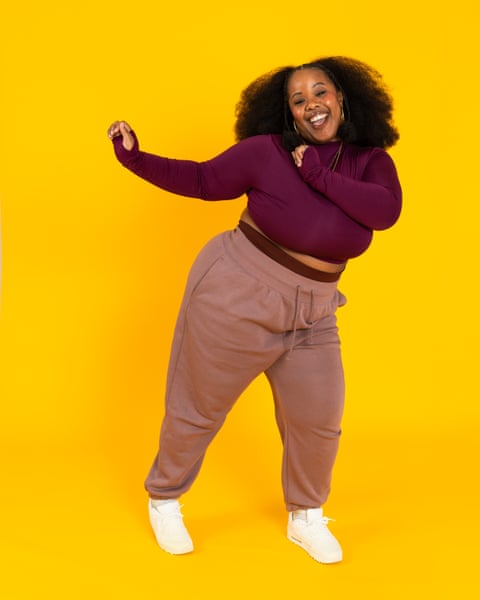
Rhian Cutter: From Breathless to Bench Press — How One Woman Transformed Her Life Through Strength Training
In 2023, Rhian Cutter, a 35-year-old nurse from South Wales, was wearing a UK size 28. Known to friends as the “chubby, funny one,” she says she became “married, happy, and complacent” — and her weight steadily increased. After struggling with fertility issues and being denied IVF treatment due to her weight, Cutter made a life-altering decision: she travelled to Turkey for gastric sleeve surgery, a procedure that reduces stomach size to suppress appetite and support weight loss.
Just six months later, her sister invited her to try a local boot camp at Peak Strength Gym in Aberdare. Cutter was terrified. “I had never done anything like that before,” she recalls. But to her surprise, the gym community was warm and welcoming — and by her second session, she was pulling a car across the parking lot with a rope.
The gym is led by Sam Taylor and Sue Taylor-Franklin, both decorated strongwoman athletes, with Sam placing second in the UK’s Strongest Woman competition in 2023. Inspired, Cutter dove into strength training and quickly caught the bug. “I’ve started doing deadlifts — my max is 125kg, which is insane,” she says proudly. Now, her routine includes two boot camps and three to four additional sessions a week, all on top of her full-time job managing a busy NHS hospital ward.
Cutter’s physical transformation has been remarkable: she’s lost around 58kg and dropped to a UK size 18. “At my heaviest, I was constantly breathless. I look at the 40kg sandbags we lift and think — how was I carrying that around every day on my body?” she reflects.
But for Cutter, the most powerful change has been internal. “I’m not training to win — I’m training to prove to myself that I can do something out of the norm,” she says. “I want to compete in strongwoman events. I’m focused, I’m driven, and I feel like a completely different person.”
Though she acknowledges societal pressure to be thin, Cutter says her goal is confidence, not conformity. “I’ll never be a size eight, and that’s OK. I feel good in my body now. I can go shopping, find clothes I like, and feel comfortable — and that’s what really matters.”

Believe in Your Body. Trust in Your Strength
No matter your size, shape, or starting point — your body is not your limitation; it’s your power. You don’t need to shrink to take up space. You don’t need to change to be worthy. Confidence isn’t about fitting into society’s mold — it’s about owning who you are and showing up for yourself every day. Whether you lift weights, dance, walk, or simply choose to rest when needed — that is strength. You deserve to feel proud of your body, not because of how it looks, but because of everything it carries you through. So stand tall, move boldly, and remember: you are already enough.

